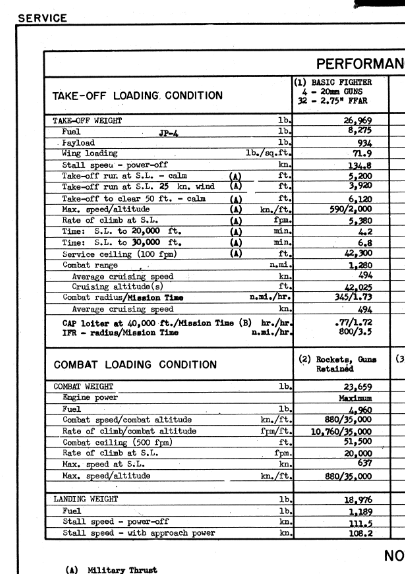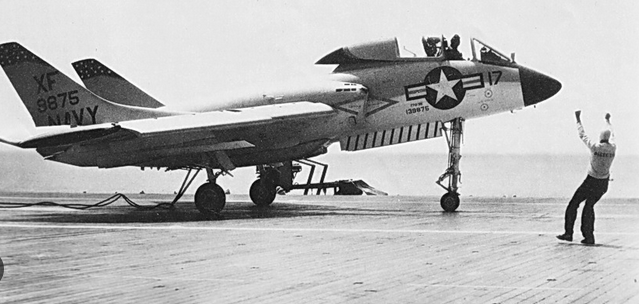orlovsky
I really should change my personal text
- Joined
- 28 May 2016
- Messages
- 268
- Reaction score
- 569
No problem.
No problem.
We have almost no single engine, mach 2 (or close) jets as examples. Different wing alone will change a lot of parameters, that's why I looked at the F-4 just for illustration.
But looking further, I had not considered how light the F-8 had started out. About 27k lbs (replace rockets with missiles).

135 kts with the higher angle wing. BLC should bring it below 130 (F-8J: 145 kts @31.5k lbs despite blc).
So a j79 and a somewhat lighter plane with some tweaking of the wing might work from the H8 - marginally, but still...
oh lord I am an idiot! Orlovsky.. I thought you were referring to the F-4JB FURY not the Phantom!!!! I apologize
No problem.
We have almost no single engine, mach 2 (or close) jets as examples. Different wing alone will change a lot of parameters, that's why I looked at the F-4 just for illustration.
But looking further, I had not considered how light the F-8 had started out. About 27k lbs (replace rockets with missiles).

135 kts with the higher angle wing. BLC should bring it below 130 (F-8J: 145 kts @31.5k lbs despite blc).
So a j79 and a somewhat lighter plane with some tweaking of the wing might work from the H8 - marginally, but still...

